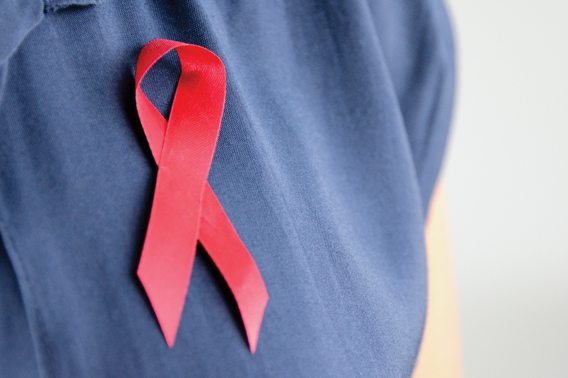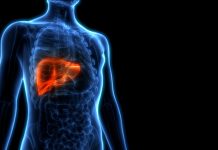
Speaking at a meeting of the HIV Outcomes initiative in November, Vytenis Andriukaitis set out the European Commission’s past, current and future role in the fight against HIV/AIDS.
The advent of antiretroviral therapy has transformed the face of the HIV epidemic, turning what was once a death sentence into a treatable condition. But for many of the 36.7 million people living with HIV (PLHIV) around the world, living well with the condition remains out of reach.
The ‘HIV Outcomes: Beyond viral suppression’ initiative was born out of the shared opinion that the international response to HIV/AIDS pays too little attention to the health and social challenges experienced by PLHIV, and as such is committed to promoting good health outcomes and a high quality of life for the HIV community in Europe.
To this end, in November the initiative published a series of policy recommendations aimed at the development of an effective and life-long approach to the long-term treatment and care of PLHIV. These call for the wider involvement of Europeans with HIV in national priority setting, funding for research into the long-term health of HIV survivors, and efforts to confront the stigma and discrimination experienced by PLHIV in health systems.
The initiative is also urging policymakers to expand the national monitoring of long-term care and outcomes and to adopt an integrated, outcomes-focused, and patient-centred approach to long-term care which includes services for comorbidities and mental health, personalised care plans, and advice and support on sexual and reproductive health.
EU action towards 2030
Launched at the European Parliament in advance of World AIDS Day (1 December), the recommendations provided a good opportunity for Vytenis Andriukaitis, the European commissioner for health and food safety, to reflect on the EU’s own role in supporting people living with HIV and the work it is doing to help end the HIV/AIDS epidemic.
Andriukaitis began by paying tribute to the “significant progress in testing and diagnosis and the improved linkage to care that can be witnessed across member states”, which he praised as bringing Europe “close to the ‘triple ninety’ targets of the UNAIDS strategy: 90% of people living with HIV know their status; 90% of people living with HIV who know their status are receiving treatment; and 90% of people on treatment have suppressed viral loads”. Indeed, in 2016, he added, “in the 31 European countries reporting under the Dublin monitoring mechanism, 89% of people receiving antiretroviral treatment were virally suppressed”, and UNAIDS reports that three member states – Denmark, Sweden and the UK – have already met the targets.
Longer term, Andriukaitis continued, the EU remains committed to the objective set under the Sustainable Development Goals of eliminating AIDS by 2030. “This is the firm engagement that the commission took one year ago in its communication ‘Next steps for a Sustainable European Future’,” he said.
The European Commission presented its first communication and action plan on combatting HIV/AIDS in 2005; a second action plan, originally intended to run until 2013, followed in 2009 and was later revised to cover the period until 2016.
In 2017 Andriukaitis renewed both the HIV/AIDS Civil Society Forum and the HIV/AIDS Think Tank, which he pointed to as evidence of the commission’s commitment to fostering co-operation at EU level with member states and stakeholders. He also expanded the remits of both bodies to include tuberculosis (TB) and hepatitis, two diseases with which co-infection with HIV is common. Tackling this triple burden, alongside other infectious diseases, is key to achieving the Sustainable Development Goal target.
The Global Fund
With this in mind, in 2016, the European commissioner for international co-operation and development, Neven Mimica, announced a €470m EU commitment to the Global Fund to Fight AIDS, Tuberculosis and Malaria for the period 2017-2019. The funding, which represents a 27% (€110m) increase on the previous EU contribution of €370m for 2014-2016, will support the Global Fund’s goal of saving eight million lives and averting up to 300 million infections over the next three years.
Horizon 2020
The investment represents just a tiny fraction of the EU’s total spend to fight AIDS, which is among the biggest in the world. The EU framework programme Horizon 2020 (2014-2020) has so far allocated €116m for collaborative research and innovation projects to improve diagnostic tools and treatment options. Within this, two major platforms – the €23m European AIDS Vaccine Initiative 2020 and the 39-partner European HIV Vaccine Alliance – are working on an effective preventive or therapeutic vaccine; a €10m loan via the InnovFin Infectious Diseases instrument has assisted the development of a low-cost HIV viral load testing device that can be used by non-specialist personnel and in low-income countries; and a €38m contribution to the second European and Developing Countries Clinical Trials Partnership (2014-2024) is supporting €80m-worth of HIV research grants, already more than the €61.41m invested in related projects during the first phase of the programme (2003-2015).
The Health Programme
In addition to research, the commission is also channelling its funds to support action on the ground, and it is perhaps here where its goals most closely align with those of the HIV Outcomes initiative. Two recently closed projects under the Health Programme – OptTEST and Euro HIV EDAT – investigated how to reduce the number of undiagnosed people in Europe and increase early treatment among vulnerable groups, while the recently launched Joint Action on HIV – INTEGRATE, also funded under the Health Programme – will help member states improve the quality of prevention and care.
“We are dedicating €2.5m in this context to foster capacity building, training, exchange of good practices and the piloting of tools for diagnosis and linkage to care. We also seek to facilitate the expansion of HIV home/self-testing and home sampling programmes,” Andriukaitis explained.
A second Health Programme-funded joint action, HA-REACT, is focusing on HIV and co-infection prevention and harm reduction among the most vulnerable people, or as the commissioner put it, the “hard to reach” and “easy to ignore – the drug addicts, the poor, the homeless, the socially excluded”.
Taking on social inequalities
It was with these people in mind that Andriukaitis called for “greater efforts to reach out to people in need and address social inequalities and social determinants, in all our work on prevention, access to screening, and care” and “to combine health instruments with social instruments and work together across health and social policies”.
He elaborated: “To improve the lives of people with HIV – and to finally eradicate HIV/AIDS – we need strong and sustained efforts across policies from a wide range of actors – including NGOs, patient groups, health professionals, the pharmaceutical industry and different sectors of government – dealing also with prison health, migration or drug use.”
Andriukaitis highlighted ABRIGADO in Luxembourg as a good example of HIV activism in action. The drug support centre provides shelter, healthcare and social services to the country’s most vulnerable people, all under one roof.
“In this centre I spoke to drug addicts and homeless people who have HIV or TB. For many of them, the ABRIGADO centre is their last hope – they have nowhere else to go. ABRIGADO is an inspiring and excellent example to follow,” he said. Unfortunately, “very few member states have such centres”.
Where next?
Looking towards 2030, then, what can be done to improve the health, wellbeing and care of people living with HIV in Europe and worldwide?
In spring the European Commission is expected to present a new action plan against HIV/AIDS, viral hepatitis, sexually transmitted infections, and tuberculosis. According to Andriukaitis, it will “review challenges and trends impacting the HIV epidemic; identify gaps in coverage, in particular in vulnerable groups; and present ways to improve efficiency of prevention and care”, and he is hopeful that its recommendations will be adopted by policymakers both in the European Union and beyond.
“Indeed, it is very important that we continue to support our neighbour countries,” he said, pointing to Russia and Ukraine as particular examples. Russia reached its millionth case of HIV in 2016, according to the global education-based HIV and AIDS charity Avert, and is home to the largest HIV epidemic in Eastern Europe and Central Asia, the only region in the world where the HIV epidemic has continued to rise rapidly.
In addition to cross-border collaboration, Andriukaitis would like to see “concrete action to scale up [Europe’s] prevention and testing programmes to reach out to the most vulnerable and address social inequalities”.
“We also need to combine health instruments with social instruments and work together across various policies,” he added, noting that “health and social policies need to work hand in hand, and other policies, including education, have a role to play, too”.
In the more immediate future, the HIV Outcomes initiative plans to ‘road test’ its recommendations in two countries (Italy and Sweden) during 2018, and will communicate its findings at a future event at the European Parliament. It’s hoped that experiences at the national level will help to refine efforts on a wider scale to improve the health and wellbeing of PLHIV beyond viral suppression.
In the meantime, the EU and its member states remain committed to finding effective and lasting solutions to the epidemic that has so far claimed 35 million lives.
This article will appear in issue four of Health Europa Quarterly, which will be published in February.






















